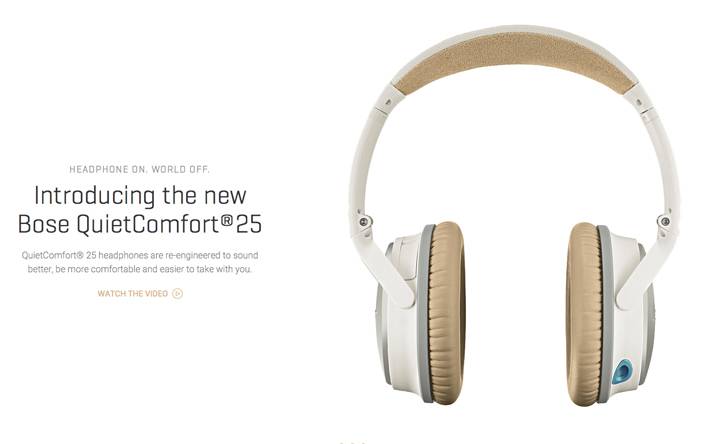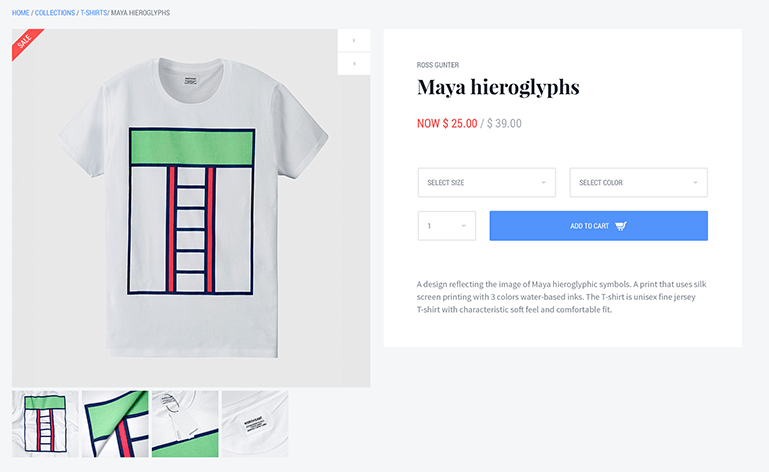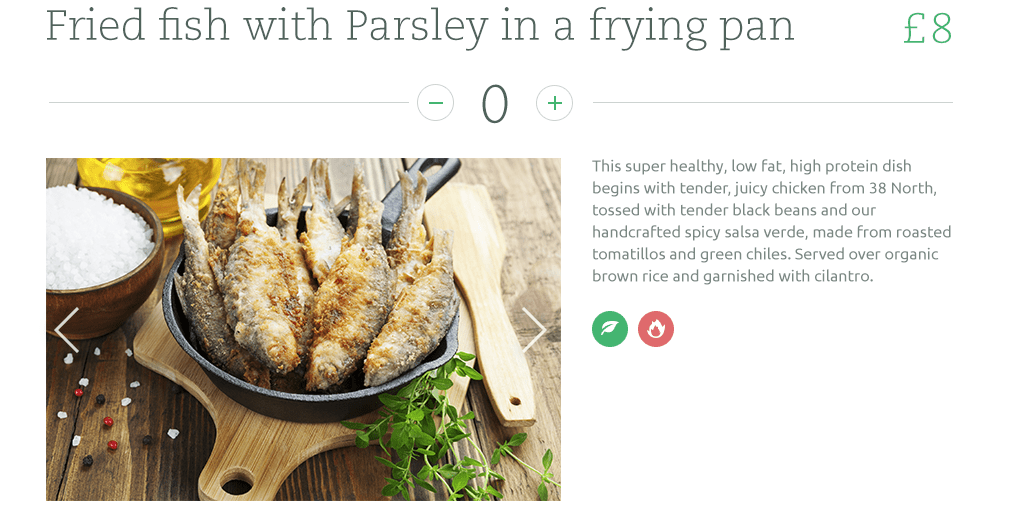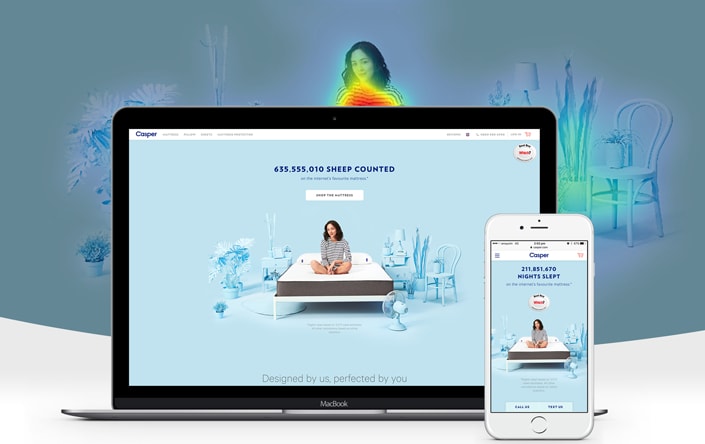Does your product description simply describe what you are selling or do they offer something more?
Overlooking the product description can be a big mistake when it comes to selling your products and services. In fact, most websites fall into the trap of simply using descriptions to describe the product when really, they should be using it to sell the product instead.
If you are looking to jazz up your product descriptions, here are 8 ways to write product descriptions that sell:
1.) Who is Your Ideal Buyer?
When you write a product description with a huge demographic in mind it makes it hard to focus your language to sell to one specific niche group.
Instead, focus on a smaller percentage of your demographic that have a legitimate need to buy what you are selling and cater your product description to them.
A good strategy with this is to use the same language that your ideal buyer would use or to highlight needs and specific things that perhaps your ideal buyer is looking for.
To give you an example, look at this product description from Think Geek for a LED Flashlight:
“You know what is sucky about regular flashlights? They only come in two colours: white or that yellowish-white that reminds us of the teeth of an avid coffee drinker. What fun is that kind of flashlight? We’ll answer that: NO FUN AT ALL. You know what is fun? Using Multi-Colour LED Flashlight to cast a sickly green glow over your face while telling a zombie story around a campfire. No campfire? Make a fake one with the orange light!”
As you can see, this product description has been written with the ideal buyer in mind. It creates humour to keep the reader engaged and uses specific language, such as “sucky” and “zombie” to cater to a specific audience.
Another good way to hone in on this strategy is to think about how you would speak to your ideal customer if you were trying to sell them face to face. Then you can use the language and tone of that conversation and incorporate it into your product descriptions.
2.) Highlight Benefits
Especially when you feel passionate about your products and services, it is easy to get carried away with all the cool features and time and money you have spent into making your product what it is.
While that is all well and good, customers really want to see what is in it for them- what benefits do your products or services have for them?
Start by making a list of all the benefits your product or services offer. Keep in mind your ideal buyer, but also don’t be afraid to think outside the box with this one too.
Here is a good example from Method Home Natural Soaps:
“Gel Hand Wash- Holiday Scent: Sometimes the scent of seasonal hand wash is all we need to rouse our holiday spirits. Available in an array of festive fragrances, our naturally derived gel hand wash will leave your hands soft, clean and ready to be tucked into a pair of fair isle mittens. It really is the most wonderful time of the year.”
As you can see, in this product description the benefits have been clearly highlighted. The soap has a holiday fragrance and keeps your hands soft and clean. It also helps stimulate the senses and create an experience as they talk about the “array of festive fragrances.”
Once you have narrowed down your top 3-4 benefits, think about how you can turn them into an experience by finding ways to evoke your customers senses.
3.) Don’t Be Vague
Do your product descriptions include cliched terms such as “excellent quality”, “a definite must buy”, or “great for the kids.”
These phrases are so over-used and uninspiring and do not help to engage or build trust with your consumers at all. Everyone thinks that their product or service is “excellent quality” but instead of telling the customer that, you need to show the customer why.
To avoid getting stuck in the trap of using cliched phrases, come up with a list of persuasive words around why your product is such good quality. When you have your list, think about ways you can incorporate those words into your descriptions.
Here is an example from the online retailer Zappos for a pair of shoes-
“The Angelfish captures classic boat shoe style in a feminine design. Genuine hand sewn construction for durable comfort. Stain and water resistant leather upper for durable and lasting wear. 360 degree lacing system with rust proof eyelets for a secure fit. Moulded EVA cushion midsole for all-day under foot comfort…..”
You get the point with this, instead of just saying these shoes are “great quality,” they have listed all the traits that make the shoes great quality such as hand sewn construction, stain and water resistant and rust proof eyelets.
Also notice how this product description has not only listed the features such as “360 degree lacing system”, but they have also listed the benefits of each feature too- “for a secure fit.”
When you take it that extra step to list the features and the benefits, customers instantly feel a sense of trust and reassurance with what they are going to buy.
4.) Back up Your Claims
Do you have the best raspberry jam in the world? Was Jennifer Hawkins spotted using your lip balm? Back up your claims with evidence and proof in order to build trust and to entice your customers to buy. This could include a reference to a survey, consumer study or image.
The same goes for using superlatives, if you say that your e-reader is the “most advanced in the world” like Amazon did, you must back it up with evidence in order to be effective.
Here is an example of what Amazon did. Their claim was “World’s Most Advanced E-Reader” but then they went to back up these claims citing- “patented built-in light evenly illuminates the screen…paperwhite has 62% more pixels…25% better contrast….”
Using statistics is another great way to back up claims as is using particular words. Amazon used the word “patent” which instantly implies that they are the only ones that are able to use this type of technology, thereby justifying their claim of “world’s most advanced.”
If you don’t have legitimate reasons to back up your claim of “best in the world” or other superlatives, you may find your copy converts better if you remove them altogether. This is because customers usually tune out to this type of dialogue when there is a lack of evidence.
5.) Use Your Imagination
Research has proven that if people can hold a product in their hands their desire to purchase it increases. This is all very well and good, but how can you get that to convert for online sales?
This is where your imagination comes to play. If your customers cannot physically hold your product you have to find a way to make them feel and imagine that they can.
Try to use language that will allow your reader to imagine what it is like to own, feel and use the product. A good example of this is from Think Geek. They wrote this about a grilling multi-tool:
“There is a person who is the hero of every BBQ or family cookout and that is the Grill Master. We always looked up to our Mom or Dad as they tended the grill and looked forward to the day when we could in charge of charring the meatstuff and searing delicious slices of fresh pineapple. Now that we are adults, it is finally our turn and technology has smiled upon us, giving us a tool that is destined to impress.”
After reading this description you can see how it evokes imagery of watching meat and juicy pineapple on the grill. It also helps paint a nostalgic picture of those hot summer days when you would BBQ and eat outside.
To create this in your own writing, simply start your sentence with the word ‘Imagine’ and then go on to explain how your reader will feel when they own and use your product. You can then refine your work and use some of the imagery in your final product description.
6.) Don’t Persuade
“Buy this now or your cat will die….” Not a very effective persuasion technique is it?
Studies have shown that people don’t like being “sold” to, so with this in mind, try to write product descriptions that make your audience forget that you are trying to sell them.
One way that you can do this is by sharing short stories or anecdotal evidence to help draw your customers in and make them feel as if they are part of something bigger than just a sales pitch.
A wine company in the UK called Laithwaites often uses this strategy for their product descriptions. Here is one of their best examples of using a “story”-
“The Daure family own one of the Rousillon’s top properties, the Chateau de Jau. Around the dinner table one Christmas they agreed it was time to spread their winds and look to new wine horizons. The womenfolk (Las Ninas) fancied Chile and won out in the end, achieving their dream when they established an estate in the Apalta Valley of Cholchagua. The terroir is excellent and close neighbours of the Chilean star Montes Winery…”
Having some background information about this product and the inspiration to its creation definitely engages and entices customers to purchase. What is great about this strategy is that rarely will people walk away feeling they have been pressured into buying. You can also bet that they will re-tell this story with their friends and family as they all enjoy the wine.
Creating a story for your product descriptions doesn’t have to be elaborate. Start with the foundation- who is behind this product? What inspiration created this product and what obstacles were overcome to create it? You can also include fun pieces of background information like the Laithwaites winery did.
7.) Focus on Sensory Words
As the name suggests, sensory words help to evoke and stimulate our senses. They wet our appetite to want and therefore help to increase sales. One scientific reason for this is that sensory words engage more of our brain power and stimulate us to take an action.
The restaurant business has been doing this for a long time with their menus. They know that the more sensory words that they use for their food item descriptions, the more likely people are to buy.
You can see plenty of examples of sensory descriptions on most food products however, one that stands out the most has to be from the chocolatier Green and Black.
Here is their product description for a Butterscotch Chocolate (while reading see if you can pick up the use of sensory language):
“A bar of wonderful distinctions if there ever was one. Crunchy toffee and smooth dark chocolate. Treacly and savoury flavours. It’s evocative, to say the least, but that’s why you are drawn to it in the fist place.”
Sensory words can often be identified as adjectives. In just these three short sentences, Green and Black have managed to use words like crunchy, smooth, treacly and savoury.
Just be mindful however, you don’t want to over stuff your product descriptions with hundreds of adjectives. Like Green and Black did, choose a few that really stand out and stimulate the senses. Keep them as tangible and as vivid as possible so your readers walk away feeling compelled to take an action.
8.) Quick Read
The final point when it comes to writing great product descriptions is making them quick and easy to read. There are many different ways to do this such as creating dot points or lists however, what style you choose will depend on your products and services.
Whatever format you choose, ensure that your description can be read quickly and easily. A good way to do this is to scan your product description and see if the main points are made clear to you.
If certain points are getting lost, consider making your font bigger, bolding or highlighting certain words, creating a heading and keeping your page design clear and easy to navigate.
You can also take this strategy to your product packaging as well such as ensuring that the label colours are inviting and that the benefits are quickly and easily highlighted.
Product descriptions are not just about the ins and outs of your product, they are about creating another opportunity to connect with your customer and remind them why they should buy your product.
Chances are you worked so hard to get your customers to your product page, don’t drop the ball by allowing your product descriptions to be uninspiring.





Hey!
It looks like you're browsing in . Would you like to switch over to the website?